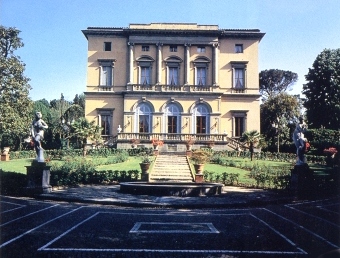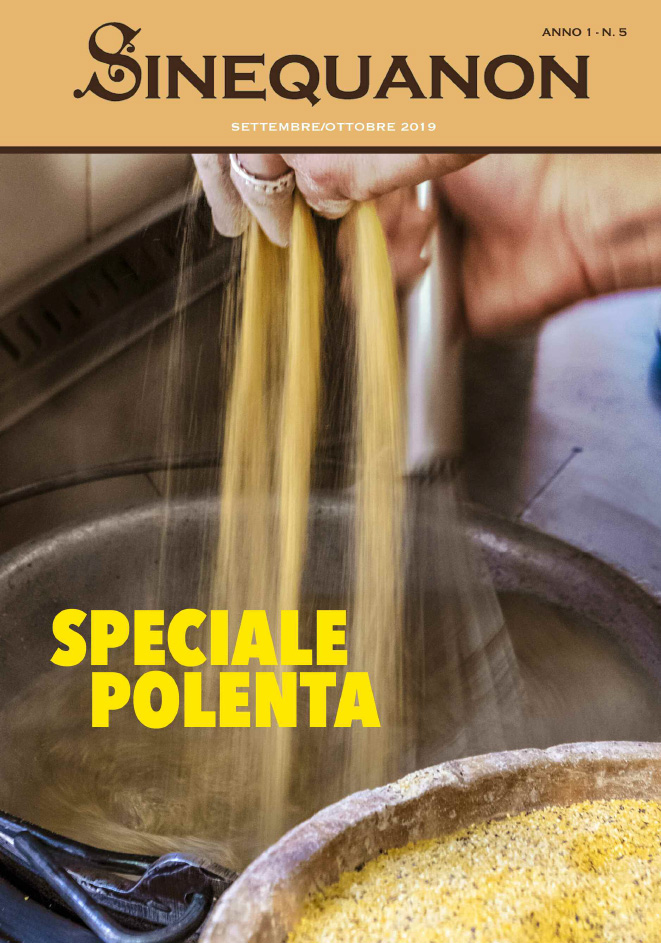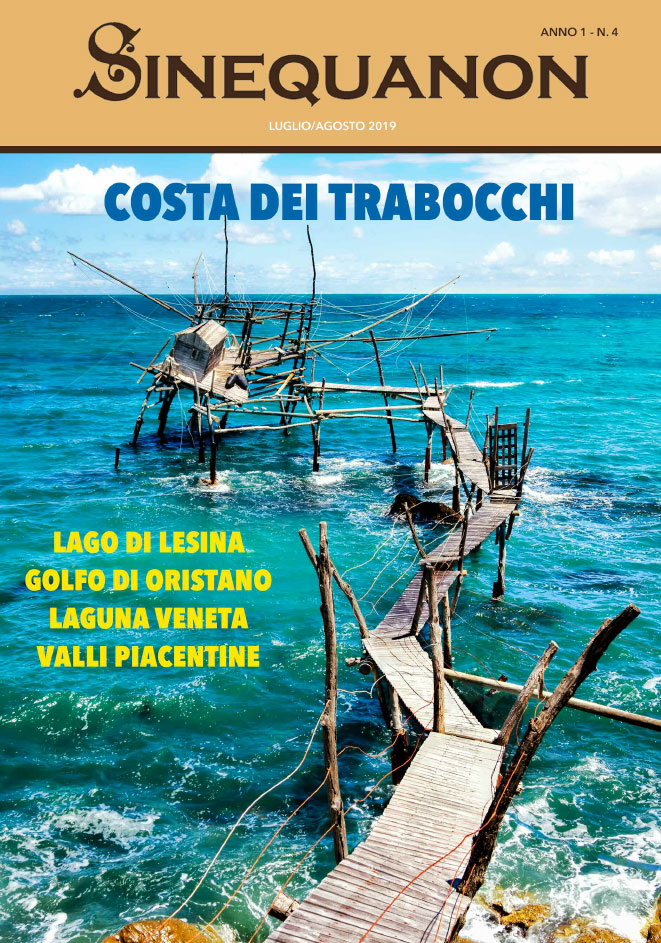TERESA CARRUBBA
A showcase of enduring opulence Villa Cora, which embodies all the dignity and aristocratic magnificence of l9th-century Florence, was built by Gustave Oppenheim, a financier with business interests in Egypt. The plans were drawn up in 1870 by the architect Pietro Comparini when Florence was capital of Italy. Considered the most splendid architectural gem on the elegant Viale Machiavelli, the villa is set in ten thousand square meters of parkland which, together with the nearby Boboli Gardens, are Florence?s most exclusive parks. Villa Oppenheim (as it was originally called) became the hub of Florence?s elegant social life. The parties Gustave Oppenheim and his beautiful wife organized there became the talk of Florence and brought even more luster to the handsome villa.
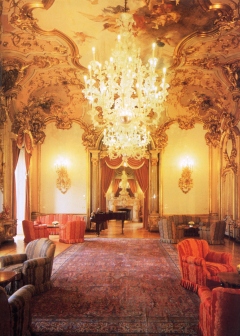
The exterior of the building, designed by Comparini, has perfect proportions in neo-Renaissance style with its cornices, intrados and colonnades in the stone called pietra serena. The clean lines contrast pleasingly with the sumptuous interiors that are a showcase for the exotic tastes of the owner and the eclectic taste of the period: from neoclassical to Pompeian and from Moorish to Byzantine and flowery Rococo. The interior décor was the work of Edoardo Gioja, the engineer who designed the Suez Canal, which was financed by Oppenheim and the Rothschilds. Gioja?s delicate circular, domed foyer, which is full of stuccowork, gold and frescoes, leads to the reception rooms. The Byzantine Room inspired by the East has exquisitely carved wooden moldings and a simulated wooden decorated ceiling of the type popular in those days. An Arab-style arch leads into the Moorish Room which has a dome and a black marble fireplace inlaid with semiprecious stones. The White Sitting Room is so-called for its exquisite carved white Carrara marble fireplace. Bas-relief ceramic plates are set into the friezes in the Ceramic Room which has handsome sideboards, furniture and finely inlaid wall-to-wall moldings
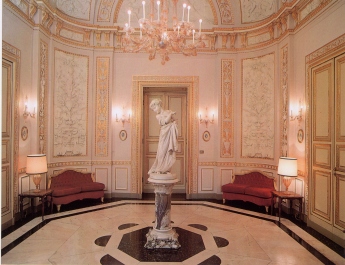
Then comes Villa Oppenheim?s showpiece, the Hall of Mirrors, ablaze with gilded Louis XV-style friezes for which Gioja found inspiration in the royal apartments in Turin. The frescoes and decorations in all the rooms were carried out by well-known artists of the day, including the painters Pietrasanti and Samoggia, the sculptor Barzeghi and the engravers Norini and Barbetti. These artists used the most precious materials available: Carrara marble, yellow Sienese marble (no longer to be found) Murano glass, ebony, and silk from the famous Fréres Braquenie d?Aubusson factory. Everything has been miraculously preserved, having survived the marriage and phantasmagorical life of the Oppenheims who eventually left their Florentine home and put it up for sale. But the villa?s rooms soon reverberated with life once again, indeed, if possible, even more than before, thanks to its new inhabitants: the former empress of France, Eugénie, her son Louis Napoleon and Prince Murat. The first reception they gave at Villa Oppenheim was so sumptuous that it was the talk of Florence?s nobility. Villa Oppenheim?s illustrious new owners stayed long enough to restore its former luster. Later owners included the Egyptian King Ismail Pasha and the wealthy Baroness Von Mech who had a sentimental affair with Peter Ilyich Tchaikovsky and invited Claude Debussy to stay at the villa.
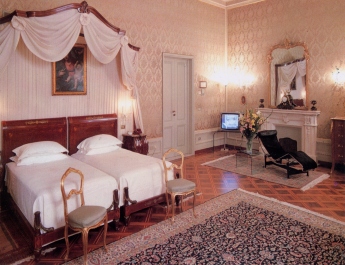
The villa took its present name from the ambassador Giuliano Cora, friend of the Ethiopian emperor Haile Selassie, who bought it in 1894. The villa has recently been restructured, restored and turned into a luxurious five-star hotel without losing any of its enchanting air of a private residence. It has forty-eight bedrooms including an imperial suite and fourteen classical suites, some of which have unusual loft-style private drawingrooms. Every room has at least one piece of antique furniture as well as precious prints, paintings and carpets. From the terrace there is a breath-taking view over Florence and its hills as well as of the villa?s splendid gardens, elegant annex and swimming pool. Thanks to the restoration which has recovered its former splendor, the impeccable service and a cuisine which has received awards from the Accademia Italiana della Cucina, the villa once again attracts illustrious personalities.

In 1993 its guest included the Japanese emperor Akihito with his wife and entourage during their official visit to Italy, an event that required eight months of preparation and constant liaison with the Japanese imperial house. And what could have been more appropriate for the emperor than the royal suite once occupied by the Empress Eugénie with its foyer, neoclassical columns, Pompeian frescoes and fabulous mosaic floor opening onto a Rococo boudoir resplendent in stucco and gilt and a bedroom with fabrics on the walls, a delicate fresco on the ceiling and a priceless parquet floor?
And, indeed, Villa Cora Is not new to the world of show business as guests have included Michelle Pfeiffer, the Cecchi Goris, Naomi Campbell and Donatella Versace who stayed there during the fashion show the late designer gave at Palazzo Pitti.
Grand Hotel Villa Cora
Viale Machiavelli 18 – 50125 – Firenze
Tel +39 055 2298451
Fax +39 055 229086

